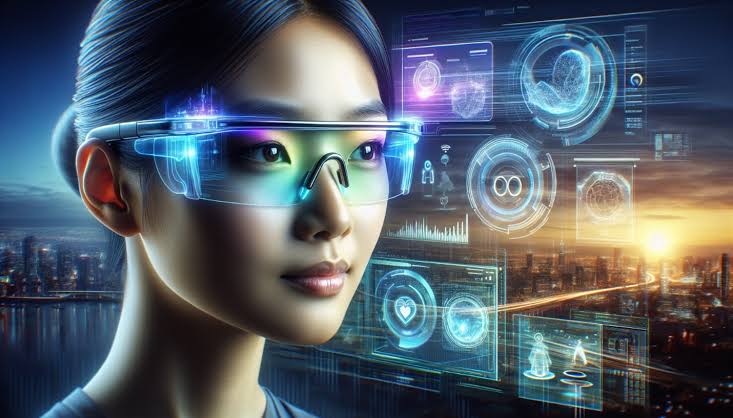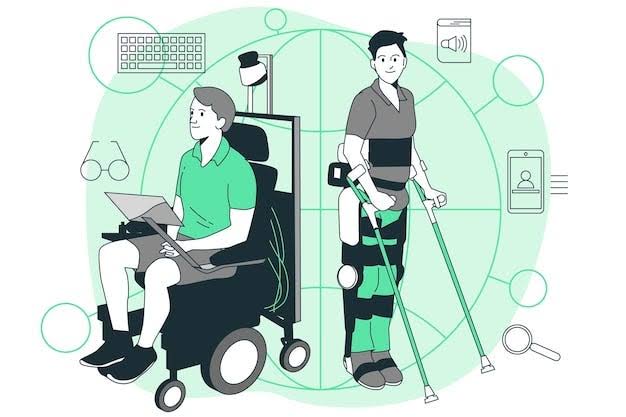Augmented Reality (AR) glasses have evolved from experimental prototypes into highly advanced wearable devices that enhance how people interact with the digital and physical worlds. By overlaying virtual information onto real-world environments, AR glasses offer opportunities in gaming, education, healthcare, manufacturing, and everyday productivity. As of 2025, major tech companies are pushing the boundaries of AR technology, making AR glasses lighter, more powerful, and more immersive. The future of AR glasses is set to transform work, entertainment, and communication in ways that were once science fiction.
Evolution of AR Glasses
AR glasses have undergone significant improvements in design, performance, and functionality over the past decade:
- Early Prototypes: Bulky headsets like Google Glass introduced the concept but were limited in capabilities.
- Modern Lightweight Designs: Current AR glasses are slimmer, resembling regular eyewear with improved ergonomics.
- Enhanced Processing Power: Integration with powerful mobile chips and cloud computing supports complex AR tasks.
- High-Resolution Displays: Modern lenses now feature vibrant holographic visuals and reduced latency.
This evolution has paved the way for broader adoption in both consumer and professional environments.
Key Drivers of Future AR Glasses Technology
Several technological advancements are shaping the future of AR glasses:
- 5G and Edge Computing: High-speed connectivity ensures smooth streaming of AR content without lag.
- Artificial Intelligence Integration: AI assists in object recognition, gesture control, and personalized experiences.
- Advanced Optics and Micro-Displays: Improvements in holographic lenses and retinal projection enhance visual clarity.
- Gesture and Voice Control: Hands-free interactions make AR glasses more intuitive and versatile.
- Battery and Energy Innovations: Longer battery life will enable all-day usage without frequent charging.
These innovations will make AR glasses practical for everyday use across various industries.
Transforming Work and Productivity
AR glasses are poised to become an essential tool for professional environments by enabling real-time visualization and collaboration:
- Remote Assistance: Technicians can receive step-by-step instructions while keeping their hands free.
- Virtual Meetings: Holographic conferencing allows teams to collaborate as if in the same room.
- Data Visualization: Engineers, architects, and healthcare professionals can overlay 3D models on physical objects.
- Field Work Efficiency: Workers in logistics, construction, and manufacturing can access live updates and digital workflows.
By reducing errors and increasing efficiency, AR glasses will redefine workplace productivity.
Enhancing Education and Training
The future of AR glasses in education and skill development is highly promising:
- Immersive Learning: Students can explore virtual laboratories, historical sites, or anatomy models in real time.
- Hands-On Training: Medical students, pilots, and engineers can practice complex procedures in a safe virtual environment.
- Language and Accessibility Tools: AR glasses can provide real-time translations and visual cues for learners with disabilities.
This immersive approach fosters better understanding and retention compared to traditional teaching methods.
Revolutionizing Entertainment and Gaming
Entertainment and gaming will be major beneficiaries of future AR glasses:
- AR Gaming Experiences: Interactive games will seamlessly merge with real-world surroundings.
- Immersive Storytelling: Movies and shows can feature augmented scenes that extend beyond screens.
- Personalized Media Consumption: Users can watch videos or read content projected directly in their field of vision.
The combination of AR glasses with spatial audio will make entertainment more engaging and interactive.
Healthcare and Medical Applications
AR glasses will have transformative effects on healthcare and patient care:
- Surgical Assistance: Surgeons can access critical data and 3D visualizations during operations.
- Medical Training: AR simulations allow medical professionals to practice without risk to patients.
- Patient Support: Glasses can help individuals with visual impairments navigate their environment safely.
- Telemedicine: Doctors can conduct remote consultations with live data overlays for better diagnosis.
These applications improve accuracy, efficiency, and patient outcomes in the medical field.
Integration with Smart Cities and Daily Life
Future AR glasses will become central to smart living:
- Navigation and Travel: Real-time directions, public transit updates, and translation overlays will enhance travel experiences.
- Shopping and Retail: Virtual try-ons and in-store navigation will revolutionize consumer experiences.
- Smart Home Control: AR glasses will allow users to manage home devices with simple gestures or visual commands.
These features will seamlessly blend digital convenience into everyday life.
Challenges and Considerations
Despite the exciting potential, AR glasses face several challenges:
- Privacy Concerns: Always-on cameras and sensors raise issues around data collection and surveillance.
- Cost and Accessibility: High-end AR glasses may remain expensive for mainstream consumers in the short term.
- Battery Limitations: Compact designs make it difficult to maintain long-lasting power without frequent charging.
- User Adoption: Public acceptance depends on comfort, style, and practical use cases.
Addressing these issues will be critical for widespread adoption of AR glasses in the future.
Future Trends in AR Glasses
- Integration with AI and IoT: AR glasses will interact with smart devices for fully connected environments.
- Mixed Reality Collaboration: Blending AR with VR will enable seamless transitions between physical and virtual spaces.
- Cloud-Driven AR: Cloud computing will offload processing tasks, making glasses lighter and more efficient.
- Wider Industry Adoption: Retail, education, healthcare, and logistics will continue to drive AR innovation.
Conclusion
The future of augmented reality glasses technology is highly promising, with applications spanning work, education, healthcare, entertainment, and daily life. Powered by AI, 5G, and advanced optics, AR glasses will provide immersive, hands-free experiences that enhance productivity and engagement. While challenges such as privacy, cost, and battery life remain, continuous innovation ensures that AR glasses will become an integral part of the digital lifestyle, bridging the gap between the physical and virtual worlds.




The future of augmented reality glasses technology is highly promising, with applications spanning work, education, healthcare, entertainment, and daily life. Powered by AI, 5G, and advanced optics, AR glasses will provide immersive, hands-free experiences that enhance productivity and engagement. While challenges such as privacy, cost, and battery life remain, continuous innovation ensures that AR glasses will become an integral part of the digital lifestyle, bridging the gap between the physical and virtual worlds.
This is cool